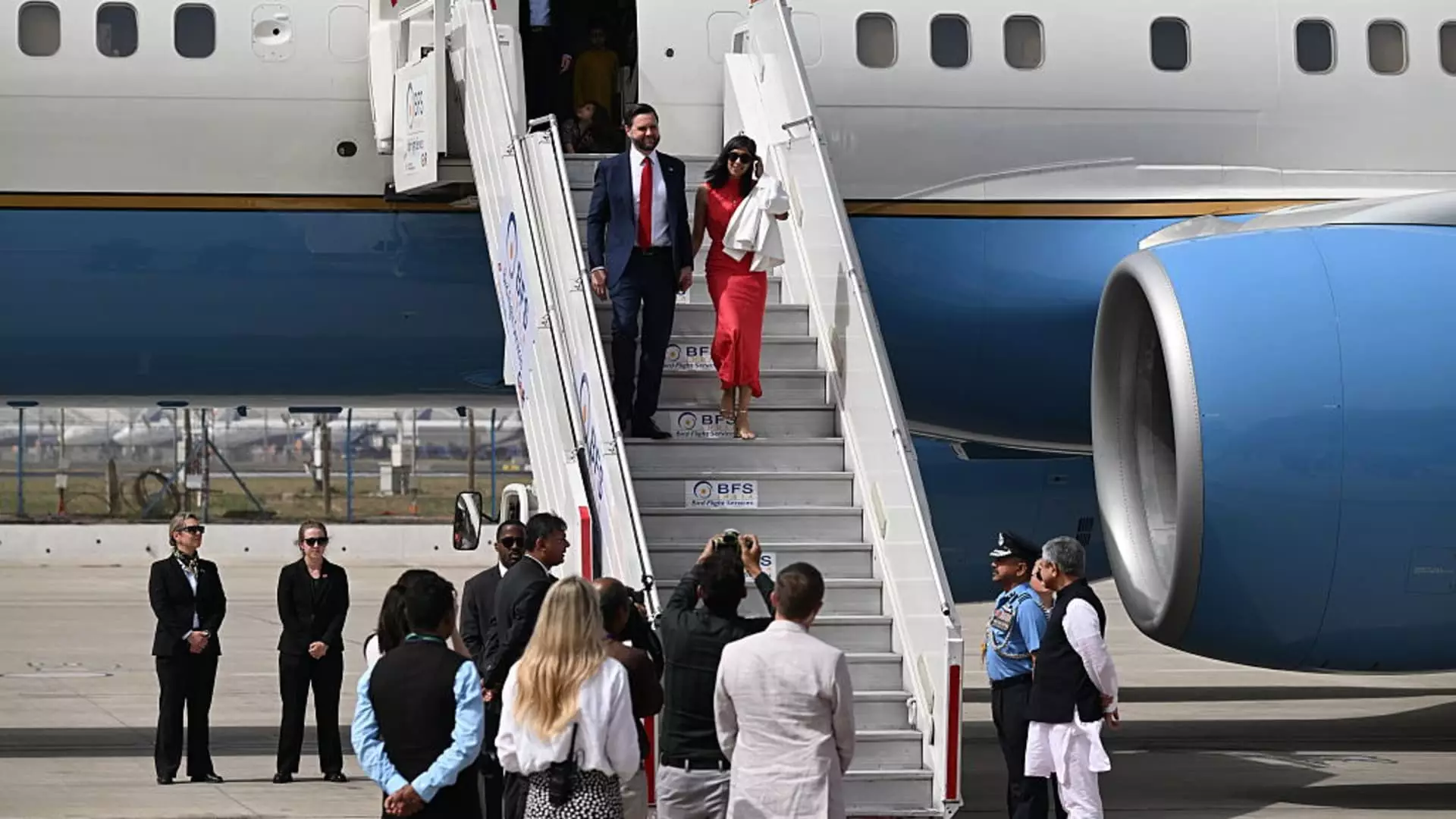The recent four-day visit of U.S. Vice President JD Vance to India could be deemed as a barometer for the future of U.S.-India relations, a partnership that has danced along the precipice of economic discord for years. At a time when global trade dynamics are increasingly strained, Vance’s visit serves not only as an opportunity to enhance diplomatic ties but also as a significant indicator of how the U.S. is navigating its foreign relations under the Trump administration.
Vance stepped onto Indian soil determined to tackle the complex negotiations surrounding trade tariffs, which hang like a sword over the heads of both nations. With India now positioned as a pivotal trade partner valued at a staggering $129 billion in bilateral trade in 2024, the stakes couldn’t be higher. During his visit, Vance engaged with Prime Minister Narendra Modi as they reviewed proposals that emerged from a fruitful meeting between Modi and President Donald Trump held in Washington. However, with Trump’s persistent labeling of India as a “tariff king,” one must question the sincerity and effectiveness of these negotiations.
Beyond Trade: Personal Ties and Symbolism
Vance’s visit was not merely a political routine; it was imbued with personal significance. Alongside official discussions, he took time to immerse himself in the culture of the land by visiting iconic sites such as the Taj Mahal and partaking in a traditional wedding in Jaipur. This gesture—nurturing personal relationships—may reflect a strategic pivot in U.S. diplomacy where the human element becomes vital for smoother negotiations. Vance’s wife, Usha, being the daughter of Indian immigrants, adds a distinct personal layer to his diplomatic mission, potentially allowing Vance to navigate Indian sensibilities with more empathy than a typical bureaucrat.
Nonetheless, whether such personal engagement translates into effective policy change remains to be seen. Countries often require more than personal goodwill to overcome decades of economic friction and the reduction of tariffs. It’s one thing to visit the Taj Mahal; it’s another to negotiate the intricacies of a mutually beneficial trade agreement.
Defense and Regional Security: A Balancing Act
Beyond the economic discourse, the defense partnership is an integral facet of U.S.-India relations. With rising tensions in the Indo-Pacific largely attributed to China’s burgeoning influence, Vance’s visit signals a greater urgency in strengthening this alliance. With expectations of defense deals including sophisticated weaponry like Javelin missiles, the implications for regional security become pronounced. However, the challenge lies in balancing these military aspirations with the necessity for clear diplomatic dialogue—especially when disagreements or misunderstandings can have dire ramifications.
While officials have refrained from signing any formal agreements during this visit, it can be surmised that true progress will have to be made in the corridors of power beyond the public eye. The anticipated trip by U.S. Defense Secretary Pete Hegseth, along with Vance’s discussions, certainly indicates a broader strategy at play, but how the respective governments handle these complex discussions will define the efficacy of their partnership.
Strategic Timing amid Global Pressures
Perhaps the most intriguing element of Vance’s visit is the context in which it occurs—amid rising U.S.-China tensions. This dynamic places substantial pressure on India to align more closely with the U.S. Conversely, it intensifies India’s need to navigate these relationships without alienating its own regional partnerships. The geopolitical chessboard is ever-evolving, and Vance’s visit could either solidify a new power axis or deepen existing frustrations.
Harsh Pant, a foreign policy expert at the Observer Research Foundation, emphasizes that the current climate demands urgent attention to U.S.-India relations. However, given the complexities involved, Vance’s task is not merely diplomatic; it requires a deft hand to understand cultural nuances and regional histories while simultaneously championing broader strategic objectives.
While the warmth of Vance’s personal engagement might signal hope for U.S.-India relations, realistic challenges loom in the background, waiting to impede progress if not carefully managed. As the world watches, U.S. foreign policy under Vance will be scrutinized, measuring not just the weight of trade agreements but also the depth of understanding and respect fostered in this ancient land.


Leave a Reply